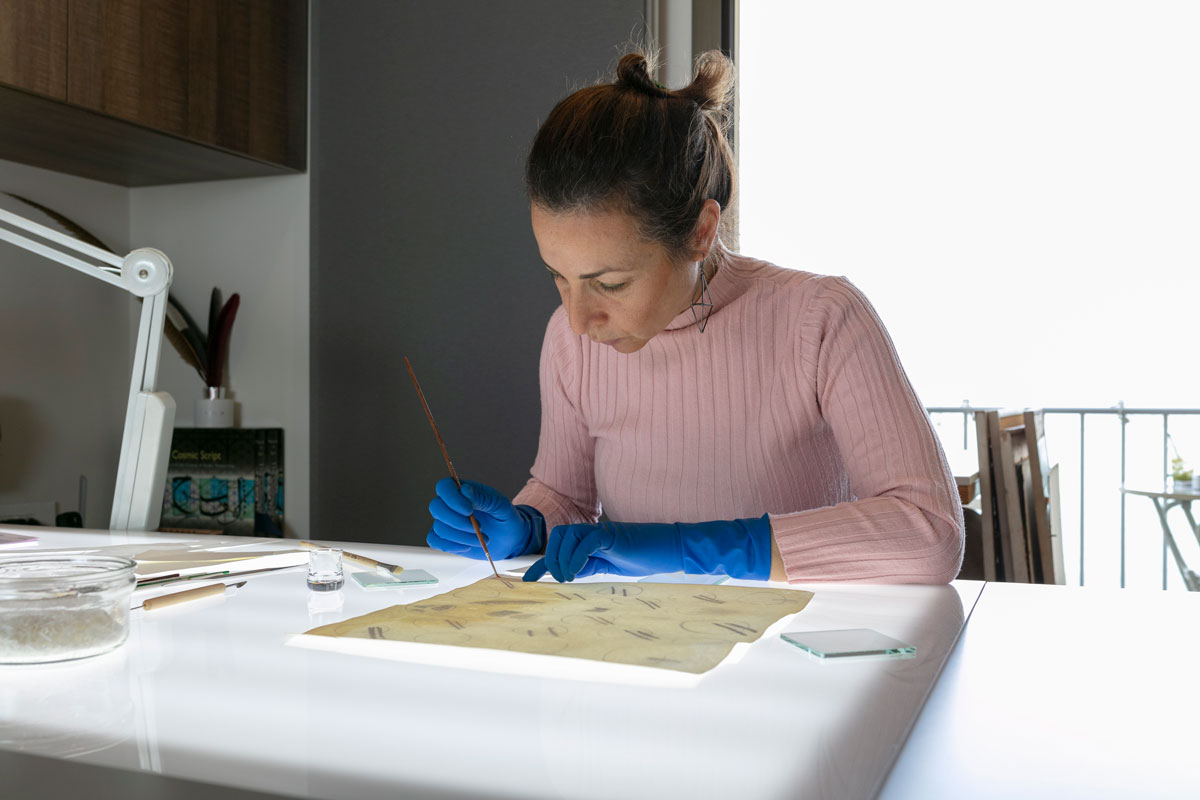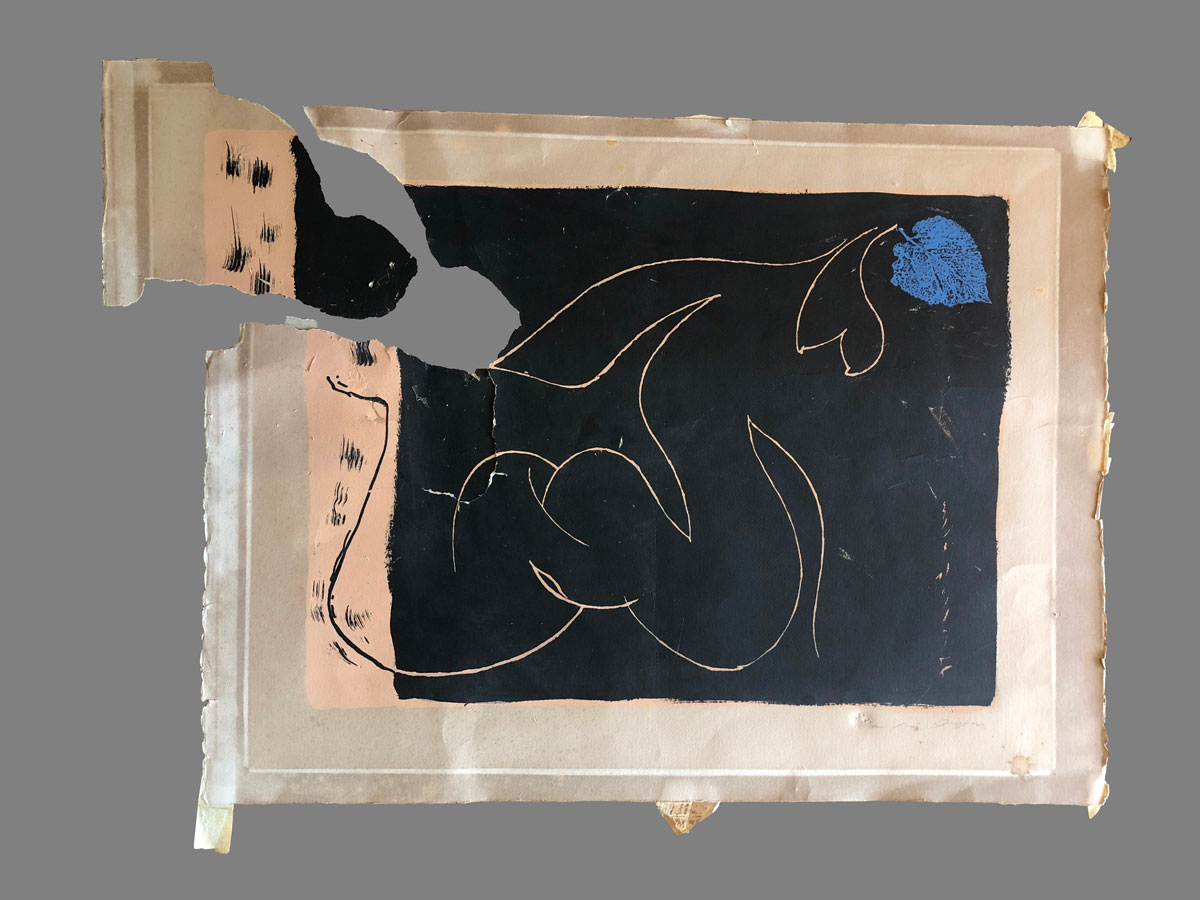Below the surface
Much more than a tool to express her often poignant thoughts, paper accompanies the Lebanese artist Carla R. Salem on her artistic journey from start to finish, and often beyond, as ArtScoops discovers
You are known for making words from diverse origins a key part of your art. What is it about lettering that interests you?
I took traditional calligraphy classes in Japan and Lebanon, and quickly became fascinated with the way that the rules and structures for individual writing systems differed from each other. The Japanese writing system contains four components, for example, which I discovered while attending language classes there, with every symbol significant and relevant in its own way. In my work, I aim to free it from previous associations, through visual means or perhaps by using movement and rhythm in the flow of the letters. I also found myself thinking, speaking and mixing languages which was incredibly inspiring. Apart from coming naturally to me, that meant I was able to experiment with the playful and poetic aspects of calligraphy, including plays on words.
How important is making your own paper to the end-to-end process of your art?
When I was young, I used to collect all sorts of paper, even chocolate wrappers (!), and I’ve remained passionate about it ever since. Fate also played a part in my education in this field, since, at the beginning of my course in Japan, our teacher asked us to write down on a slip of paper what we most wanted to study and put our answers in a bowl, after which he selected one at random. I wrote down papermaking and mine was chosen. I soon discovered that paper isn’t only a receptor, but is also a giver or provider of information. Once I understood this concept, paper became a fundamental tool of my work. Most people perceive paper as a two-dimensional product, with a front and a back, but to me it has a third dimension. When the paper is still wet, I can make it thicker or thinner, and choose whether to introduce water marks or leave fibre marks for example. Sometimes, shapes form on the surface or light starts coming through, which can inspire me, and I’ll begin building a story before the paper even reaches the table.
You took part in the Beirut Mapped project. How did you set about preparing and producing your contribution?
When Rachel Dedman, the V&A Jameel curator, came up with the concept for Beirut Mapped in partnership with the Arab Image Foundation, Beirut, I was delighted to be able to contribute to this landmark series of reflections from local artists and writers about the devastating effect of the economic crisis and the explosion at Beirut Port on August 4, 2020, on Lebanon and its people. My contribution took the form of a piece of paper that I picked up while walking along the Corniche, remodelled, and then drew on over and over again. I felt that drawing onto the newly remodelled form accurately represented what was happening in Beirut - where the past kept resurfacing, despite efforts to bring about change, and where action of any sort, even on top of the disastrous events, failed to bring about change. I wanted to relay the helplessness that people felt about the situation and the lack of solutions being offered. They felt trod upon, like an insignificant piece of trash. Yet, just like the piece of paper, people are made of something stronger than is sometimes perceived and deserve better – that was the message I wanted to share.
You found yourself somewhat unexpectedly in demand repairing artworks damaged in the Beirut Port explosion. How did this come about?
Like many others, straight after the blast, I focused on doing what I could to help with the immediate crisis, but then people who knew me as a paper specialist and whose art had been damaged in the explosion began asking me if I could repair their work. Before I knew it, the work was mounting up! I’d taken a conservation course in Italy and was able to draw on my studies and experience to do the repair work. Helping people in this way felt incredibly rewarding and satisfying since I felt useful on a micro and macro level, bringing a little happiness to the owners and also helping to repair part of our heritage. The artworks have arrived with varying degrees of damage - some torn and some simply needing retouching, while others requiring significant repair. There’s also the issue of whether the owners want the damage to be evident afterwards or hidden – a specific topic of conservation. Personally, I like to see the repaired tear afterwards - I compare it to talking about a problem, which is healthier than bottling it up - but I understand that some people want repair work concealed.
What are you working on now?
I’m focusing on creating pieces that are inspired by the processes I’ve been using in the repair work and the backstory to the entire project. Some work is so significant that it invites you to make a statement and I felt that this was definitely the case here. Conservation work is highly technical and also has intellectual components to it – there were times I felt like a surgeon doing sutures or tending to a wound, for example, which was really elevating and it was these elements, together with the context, that inspired me in my own work. The exhibition is still a work in progress, but the process of mending will definitely be a key theme.

Photo of Carla Salem at work courtesy of Elie Bekhazi
Photos show ‘before’ and ‘after’ of paper restorative treatment undertaken by Carla on ‘Femme nue à la feuille’ - a lithograph by André Masson. The work is owned by Andrée Fattal, an artist herself who gathered up the pieces of the damaged paper from rubble in her Ashrafieh home following the August 4, 2020 blast at the Beirut Port.

